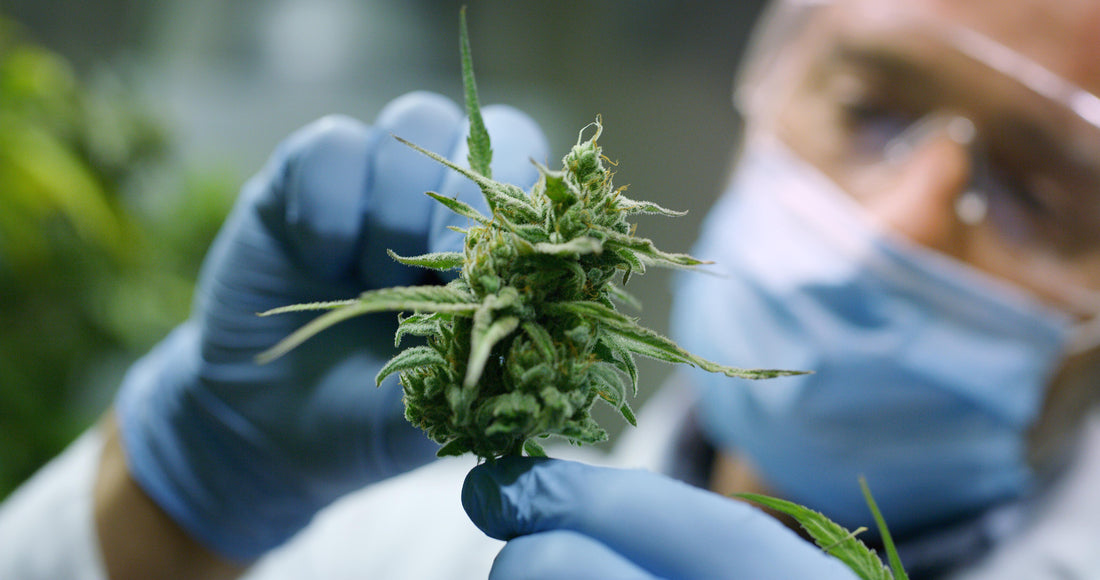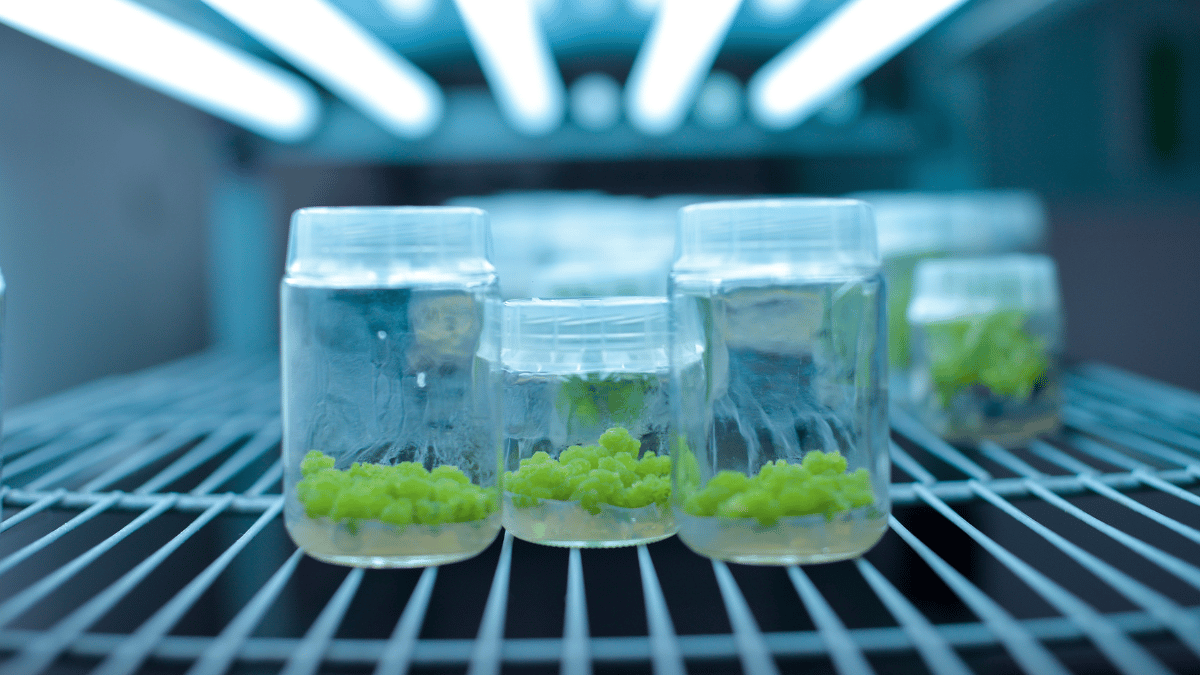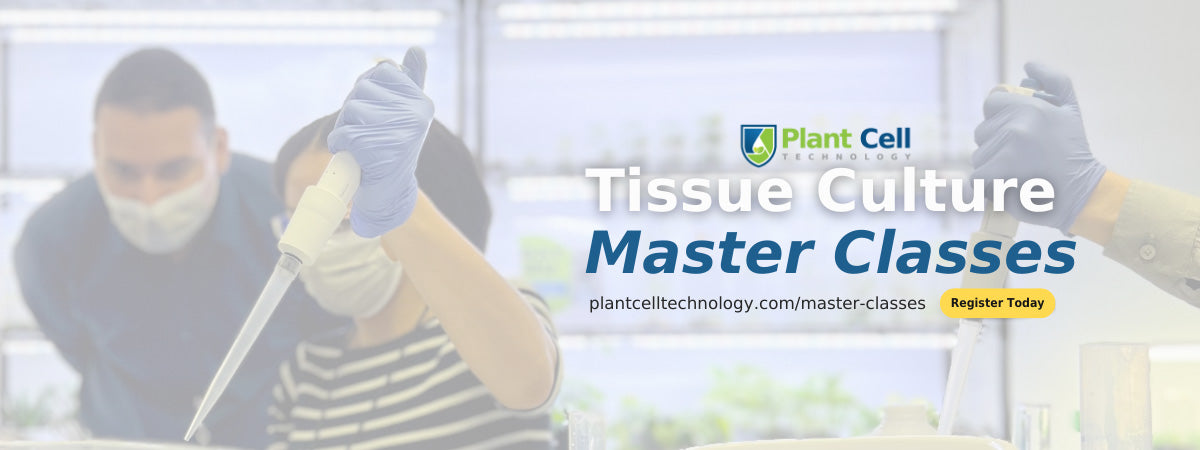
How to Tissue Culture Cannabis?
As a content and community manager, I leverage my expertise in plant biotechnology, passion for tissue culture, and writing skills to create compelling articles, simplifying intricate scientific concepts, and address your inquiries. As a dedicated science communicator, I strive to spark curiosity and foster a love for science in my audience.


Traditionally Cannabis is grown is using seeds and cuttings. The techniques are still predominantly used in the majority of the Cannabis facilities for the ease they offer. However, for commercial growers, they do not offer a feasible approach.
Basics of Cannabis
Cannabis, a member of the Cannabaceae family, has a rich historical significance in the Middle East and Asia due to its medicinal properties. This annual flowering herb exhibits dioecious characteristics, with male and female reproductive organs present in separate plants, allowing for open pollination. With a wide range of applications, Cannabis is utilized for its fiber, oilseeds, food, as well as recreational and medicinal drugs. However, due to its psychoactive effects, the cultivation of Cannabis is subject to strict control and regulation in many countries.
Traditionally Cannabis is grown is using seeds and cuttings. The techniques are still predominantly used in the majority of the Cannabis facilities for the ease they offer. However, for commercial growers, they do not offer a feasible approach.
Cannabis plants are susceptible to a range of fungal and viral diseases. Around 90% of the Cannabis crops in California have HpLVD infection (Hop latent viroid) that has affected the yield, production, and supply chain of its products. These challenges can be overcome by using the tissue culture technology.
Because, the technique is performed in complete sterile conditions, it enable growers the production of disease-free plants.
Not to forget, the technique also resolve space constraint problems associated with traditional growing methods. With tissue culture there's no need of large rooms for keeping mother plants or plants of different stages. You can stack the jars of your tissue culture plants on the rack, saving so much space for your other operations.
And, there are more. Read this article to learn more about the advantages of tissue culture for Cannabis growers, like you.

In this article we talk about a brief history and procedure of tissue culture of Cannabis and delve more into understanding the plant's chemistry.
History of Cannabis tissue culture
The applications of Cannabis were neglected over years because of its use as a psychoactive drug. It was highly restricted in several countries including Canada and the US initially in 1912. The early small-scale investigations have shown its use to treat multiple diseases like autism spectrum disorder, anxiety, chronic pain, and seizures. But, the Cannabis culture restrictions slowed down (and completely stopped at some places) the progress of Cannabis research and its commercialization. It created several challenges in investigating the medicinal, agronomic, horticulture, and biotechnological aspects of the plant.
But in 2014 Cannabis was legalized again in several parts of the world for its medicinal and recreational values with some guidelines, regulations, and control.
Cannabis description
Cannabis belongs to the family Cannabaceae. It’s a fast-growing plant that grows typically 6m in its native habitat. The plants show the difference in its height depending on the habitat in which it is being grown. For example, Cannabis plants grown in temperate regions are comparatively shorter in size than their native habitat.
Cannabis’s first two leaves are opposite when it starts growing but eventually, the arrangement of leaves becomes alternate with the plant’s growth. The leaves are digitate and range from 5-11 cm in size. They are dioecious but the sexuality of the plant can not be identified until the flowers begin to appear. The male Cannabis plants are generally not utilized as medicinal plants because of the low level of cannabinoids (a secondary compound used to manufacture medicine/drugs) present in them.
The Procedure of Tissue Culture of Cannabis
The tissue culture of Cannabis is the clonal propagation of the plant under a controlled aseptic environment. The technique is mainly used to obtain secondary compounds from the plants, primarily cannabinoids that are used in clinical research labs as a treatment for many disease. The techniques that have been extensively studied in terms of Cannabis tissue culture include callus induction and Agrobacterium-mediated transformation of hemp.

Cannabis tissue culture involves several stages that are crucial for the successful propagation and cultivation of the plant. These stages include:
- Initiation: The process begins by selecting a suitable explant, which could be a piece of plant tissue, such as a shoot tip or leaf, from a disease-free and genetically desirable mother plant. The explant is sterilized to remove any contaminants and then placed on a sterile nutrient medium.
- Multiplication: In this stage, the explant undergoes rapid cell division and multiplication. The explant is transferred to a fresh nutrient medium containing growth regulators such as cytokinins and auxins, which promote shoot formation and proliferation. This leads to the development of multiple shoots or microshoots.
- Rooting: Once an adequate number of shoots have been obtained, they are transferred to a rooting medium that contains auxins, which stimulate root development. This allows the shoots to develop a well-established root system, enabling them to absorb nutrients and water from the growing medium.
- Acclimatization: Once rooted, the plantlets are carefully acclimatized to the external environment. This involves gradually exposing them to ambient conditions, adjusting humidity, temperature, and light levels to ensure their successful transition from in vitro conditions to the ex vitro environment. Acclimatized plantlets can then be transferred to the greenhouse or field for further growth and development.
Throughout these stages, strict aseptic techniques, proper nutrient formulations, and precise environmental control are essential to maintain the health and vigor of the tissue-cultured cannabis plants. These techniques allow for the mass production of genetically identical plantlets, which can be used for commercial cultivation, breeding programs, and research purposes.
You can find the detailed procedures of Cannabis tissue culture in the following research papers:
- An Alternative In Vitro Propagation Protocol of Cannabis sativa L. (Cannabaceae) Presenting Efficient Rooting, for Commercial Production
- In Vitro Propagation of Cannabis sativa L. and Evaluation of Regenerated Plants for Genetic Fidelity and Cannabinoids Content for Quality Assurance
Want to Get Hands-on-Experience in Cannabis Tissue Culture? We Can Help!
Tissue culture is an advanced technology that requires growers to have knowledge and expertise to efficiently integrate it into their lab setting. For beginners, deciphering information from research papers and understanding how to get started can be a challenge. But fear not! We have the solution for you.
Introducing our comprehensive Cannabis Tissue Culture Master Class, designed to provide you with all the necessary information and guidance to excel in tissue culture. Whether you're new to the field or already have an established Cannabis tissue culture business, this master class is perfect for you.
Join us at the Cannabis Tissue Culture Master Class and gain access to protocols, sterilization processes, gender screening techniques, long-term preservation methods, and much more. The classes are led by experts in the area, having 15-30 years of hands-on-experience with the technique. This is the opportunity for you to learn from the experience of these experts, get answers to your list of questions regarding the process and lab building, and level-up the game of you Cannabis lab.
Since there are only a limited number of seats available, we encourage you to book your tickets today to secure your place at the table of all Cannabis growers and businessmen worldwide.
See You at the Master class!
References
- Lata, H., Chandra, S., Khan, I. A., & ElSohly, M. A. (2016). In Vitro Propagation of Cannabis sativa L. and Evaluation of Regenerated Plants for Genetic Fidelity and Cannabinoids Content for Quality Assurance. Protocols for In Vitro Cultures and Secondary Metabolite Analysis of Aromatic and Medicinal Plants, Second Edition, 275–288.
- Monthony, A.S.; Page, S.R.; Hesami, M.; Jones, A.M.P. The Past, Present and Future of Cannabis sativa Tissue Culture. Plants 2021, 10, 185. https://doi.org/10.3390/plants 10010185
- https://themodern.farm/studies/Tissue%20Culturing/micropropogation-cloning-hemp-shoot-tip-cultures.pdf
- https://ddd.uab.cat/pub/tfg/2014/119249/TFG_javier...
Blog Categories
View by Level
Popular Blogs

Callus Culture: Definition and Applications
Introduction Tissue culture is not just one technique! Yes, you heard right! As you know, tissue culture is an advanced...
Read More
6 Plant Tissue Culture Books to Keep Learning
Introduction Most of us are fans of books when it comes to learning a topic in detail and in a...
Read MoreSubscribe to Our Newsletter








Join the conversation
Your email address will not be published. Required fields are marked